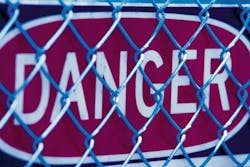The new standards, ISO 13849-1 and IEC 62061 add a quantitative calculation to machine design. These standards will replace EN 954-1, which became the machine safety standard in Europe and throughout most of the world after being released in 1992.Many in the industry view 954-1 as overly simplistic, because it does not require the assessment of safety components in relation to time or lifecycle. The new standards require machine builders to add quantitative calculations to the design. This will result in a more methodical assessment of the machine’s performance, reliability and availability.EN 954-1. European Norm (EN) 954-1—titled “Safety of Machinery, Safety Related Parts of Control Systems”—was developed for safety of plant machinery. The standard has two parts: 1. General principles of design and 2. Validation, testing and fault lists. The standard sets out procedures for the selection and design of safety measures. It also provides a list of typical safety functions such as stops, manual re-sets, starts and re-starts and more. While appropriate for its day, 954-1 is now considered appropriate mostly for low-complexity systems.ISO 13849-1. This standard developed by the International Organization for Standardization builds on EN 954-1. The standard specifies system reliability based on hardware-oriented structure, calculated mean time to dangerous failure, and diagnostic coverage of the safety function. The standard applies beyond electric and electronic systems to include mechanical, hydraulic and pneumatic parts of the control system.IEC 62061. The International Electrotechnical Commission developed this standard for “functional safety of safety-related electrical electronic and programmable electronic control systems.” The standard determines the amount of risk that needs to be reduced in a machine in terms of safety integrity levels (SIL). The machine industry uses three SILs that determine the level of risk. The standard sets the SIL levels for the machine system and subsystems, though with flexibility. Related Feature - Despite Delay, Machines Makers Move On Global Safety StandardsTo read the feature article relating to this story, go towww.automationworld.com/feature-6995.
Subscribe to Automation World's RSS Feeds for Feature Articles
About the Author
Rob Spiegel
Contributing Editor
Sign up for our eNewsletters
Get the latest news and updates

Leaders relevant to this article:
